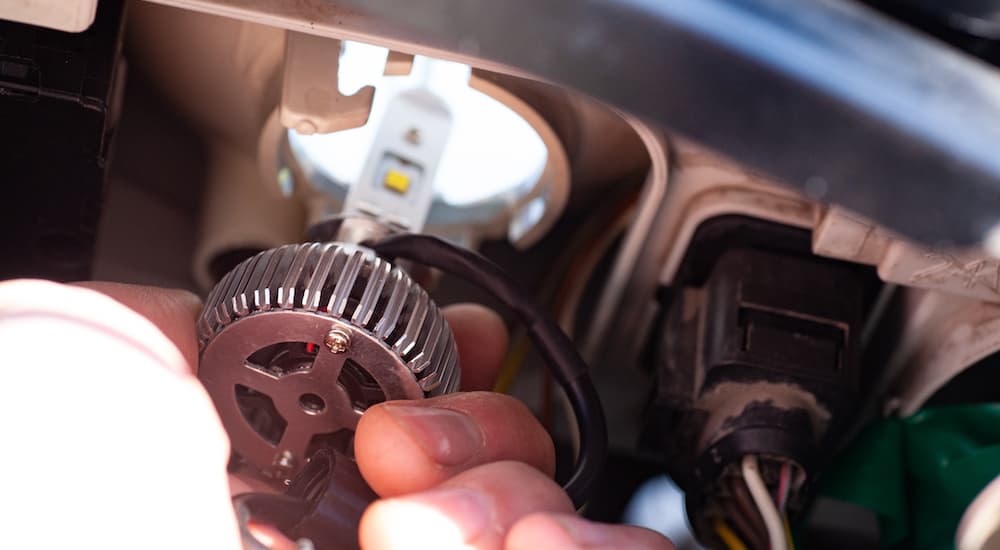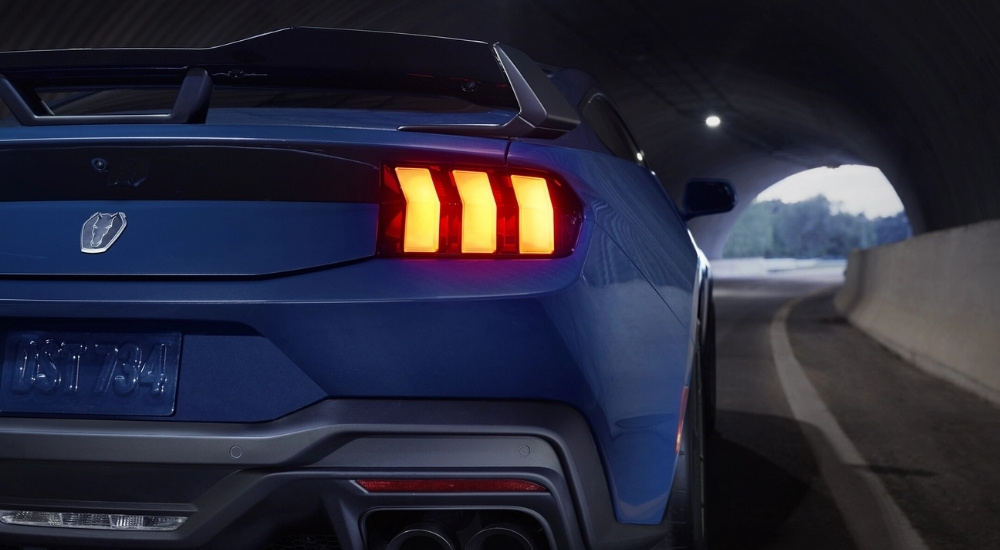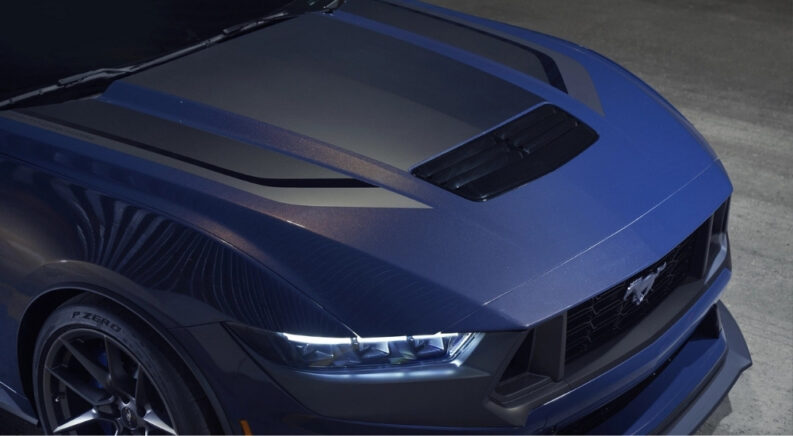Does your Ford have a headlight or tail light that’s out? That’s inconvenient, but you’ll want to ensure that gets fixed as soon as possible. Aside from safety and visibility concerns, you certainly don’t want law enforcement catching you with a burnt-out headlight. Nobody likes getting a ticket. Just like all things, it can be tempting to put off fixing a headlight or tail light, but this is actually one thing that should never be put off. Can you fix it yourself, or do you need to take it to a mechanic? Typically, you can do either one, but there are some factors to consider.
The first thing you want to find out is the root of the issue and what kind of headlights and tail lights your Ford has. If you drive a recent model year, chances are the headlights and tail lights use LED bulbs. Do LED bulbs make a difference? Can you replace Ford LED headlights and taillights yourself? Those are great questions. If you’re comfortable paying for someone else’s labor and want it done quickly and easily without much thought on your part, you can certainly take your vehicle to a Ford service center, and they can conduct the replacement for you. Depending on the specific LED bulb, they may or may not need to order the bulb from the manufacturer, but they will have no problem conducting the replacement itself. That said, if you want to be hands-on with your car and conduct that replacement yourself, it certainly is possible. However, there are some things you’ll want to know and be prepared for.
LED Bulbs
First, it’s good to establish the difference between LED bulbs and traditional bulbs. LED bulbs come with many benefits. In short, the benefits are brighter light, lower heat, and longer life-span. As such, it’s hard to see a downside to LED bulbs. That said, it can sometimes take a little bit more searching to find the exact LED bulb needed for your vehicle’s headlights and taillights. Traditional bulbs are a bit more ubiquitous as they’ve been the standard for decades, while LED lights are a relatively new phenomenon.
While traditional incandescent bulbs operate on the basis of light produced by heat, LED lights operate on the basis of electroluminescence. This means that LED lights do not produce the same level of heat as incandescent bulbs (making them less of a fire hazard for home use, by the way), meaning they run more efficiently. The electroluminescence process also produces a brighter, sharper source of light. If you’ve ever seen a comparison of incandescent twinkle lights vs. LED twinkle lights, you’ve probably noticed that the LED lights have a higher level of intensity. While different people may have different opinions on twinkle lights, I think most people can agree that the bright light produced by LED lamps is a huge positive in vehicles, significantly increasing visibility. With the electroluminescence process also comes a significantly longer life span, so having LED bulbs in your car makes you less likely to need to change bulbs as often.
There are a lot of plus sides to having LED bulbs in your car. If you’re looking to replace an LED bulb for your Ford’s headlights or taillights, as long as you know what kind of bulb to get, you can easily take care of the replacement on your own.

What You’ll Need
If you’re looking to handle an LED headlight or taillight replacement on your own, the process can be relatively straightforward as long as all you need to do is replace a bulb, and the issue does not have to do with deeper electrical problems in your vehicle. If a bulb replacement is all that’s necessary, you’ll likely be able to get by with some basic tools, namely screwdrivers and a socket/ratchet set.
When replacing a vehicle lamp, getting a pair of work gloves is highly advisable if you don’t already own some. Since you’ll be working with pieces that are made of glass and/or sharp plastics, you’ll want to avoid any harmful contact. Moreover, natural oils from the hands, as well as any dirt you may have on your hands, can cause bulbs to fail, so wearing gloves ensures that the bulb is able to function and have longevity.
Changing the Bulb
Once you have everything you need, you may get to the car and realize you have no idea how to access the light socket. You should not try to pry open the glass covering over the bulb. Believe it or not, you’ll want to open your hood to change a headlight. Different vehicles have different access points to the light socket, but typically, a hatch can be opened, allowing access to the socket. A taillight typically has a similar hatch built into your vehicle’s rear storage area, allowing access to the tail light sockets.
Because you will be working with highly sensitive, electrically powered parts of the vehicle, it is advisable to disconnect the battery before attempting a bulb replacement on your own. Doing so will cut off the electrical current flowing to the socket, providing a significant safety guard. This applies to both taillights and headlights. Playing it safe rather than sorry is always better if you don’t consider yourself experienced in this area.
Changing the bulb is relatively straightforward once you’ve gained access to the socket. Typically, it will be a screw-and-unscrew process like any other light bulb replacement, though an extra level of care and tact is needed, given the angle you’ll be working at and the sensitivity of the sockets. Some bulbs are held in place by a wire clip, so depending on the bulb type, you may need to unlatch the old bulb and latch the new one.
Regardless of the bulb type, the best practice is to proceed slowly and carefully. Rushing the process can harm you or your vehicle, so don’t hesitate to take your time.
Changing the Light Assembly
Some LED lights, particularly tail lights, do not use a single large bulb like traditional ones. Sometimes, numerous small LEDs are built directly into the light assembly itself and are impossible to replace separately. In this case, the entire light assembly will need to be replaced if it is not working or if significant areas of the built-in LEDs are not illuminating.
Fortunately, this procedure is the same as replacing any light assembly on an older vehicle. Several screws or bolts attach the assembly to the vehicle. Simply remove these bolts, pull out the assembly, and unplug any wiring attached to it. Plug in the new assembly and install it the same way you removed the original one.

Illuminating the Path
It’s fun to be a hands-on vehicle owner. Learning basic maintenance processes on your vehicle can be fun and economical, allowing you to gain more knowledge about your vehicle and keep more money in your bank account. However, ensuring you understand how to conduct such maintenance properly is important. While fixing headlights and tail lights can be quite simple, there is a learning curve upfront, and it can be helpful to have a resource to provide further information or walk you through the process. If you want to know what kind of bulbs your vehicle needs or how to access the light sockets, visiting a Ford service center and asking those questions is a great way to get the insight you need to navigate the process yourself. Go slow and be safe. As long as you take that approach, you can develop some great skills to maintain your vehicle.

